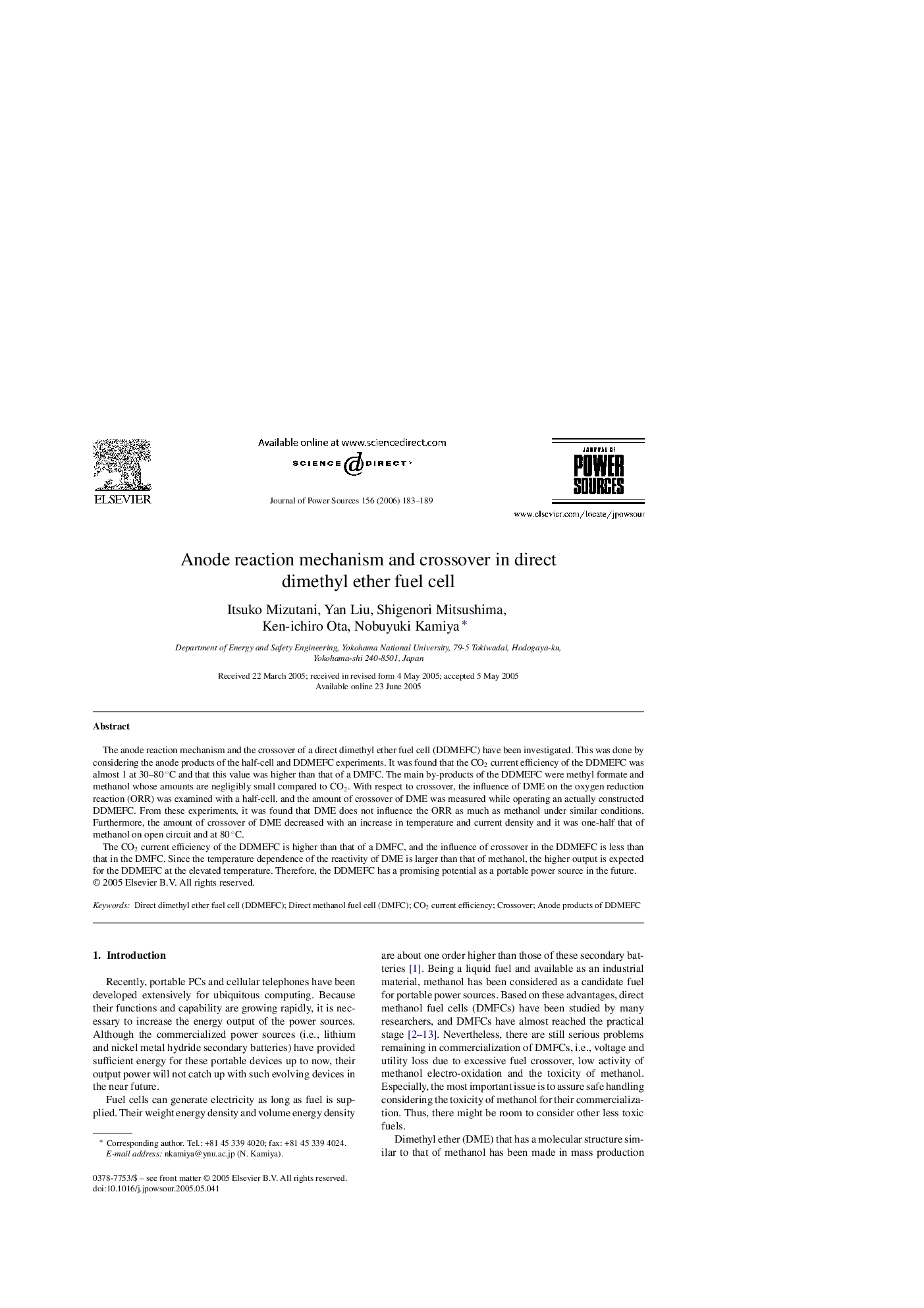| Article ID | Journal | Published Year | Pages | File Type |
|---|---|---|---|---|
| 1295017 | Journal of Power Sources | 2006 | 7 Pages |
The anode reaction mechanism and the crossover of a direct dimethyl ether fuel cell (DDMEFC) have been investigated. This was done by considering the anode products of the half-cell and DDMEFC experiments. It was found that the CO2 current efficiency of the DDMEFC was almost 1 at 30–80 °C and that this value was higher than that of a DMFC. The main by-products of the DDMEFC were methyl formate and methanol whose amounts are negligibly small compared to CO2. With respect to crossover, the influence of DME on the oxygen reduction reaction (ORR) was examined with a half-cell, and the amount of crossover of DME was measured while operating an actually constructed DDMEFC. From these experiments, it was found that DME does not influence the ORR as much as methanol under similar conditions. Furthermore, the amount of crossover of DME decreased with an increase in temperature and current density and it was one-half that of methanol on open circuit and at 80 °C.The CO2 current efficiency of the DDMEFC is higher than that of a DMFC, and the influence of crossover in the DDMEFC is less than that in the DMFC. Since the temperature dependence of the reactivity of DME is larger than that of methanol, the higher output is expected for the DDMEFC at the elevated temperature. Therefore, the DDMEFC has a promising potential as a portable power source in the future.
